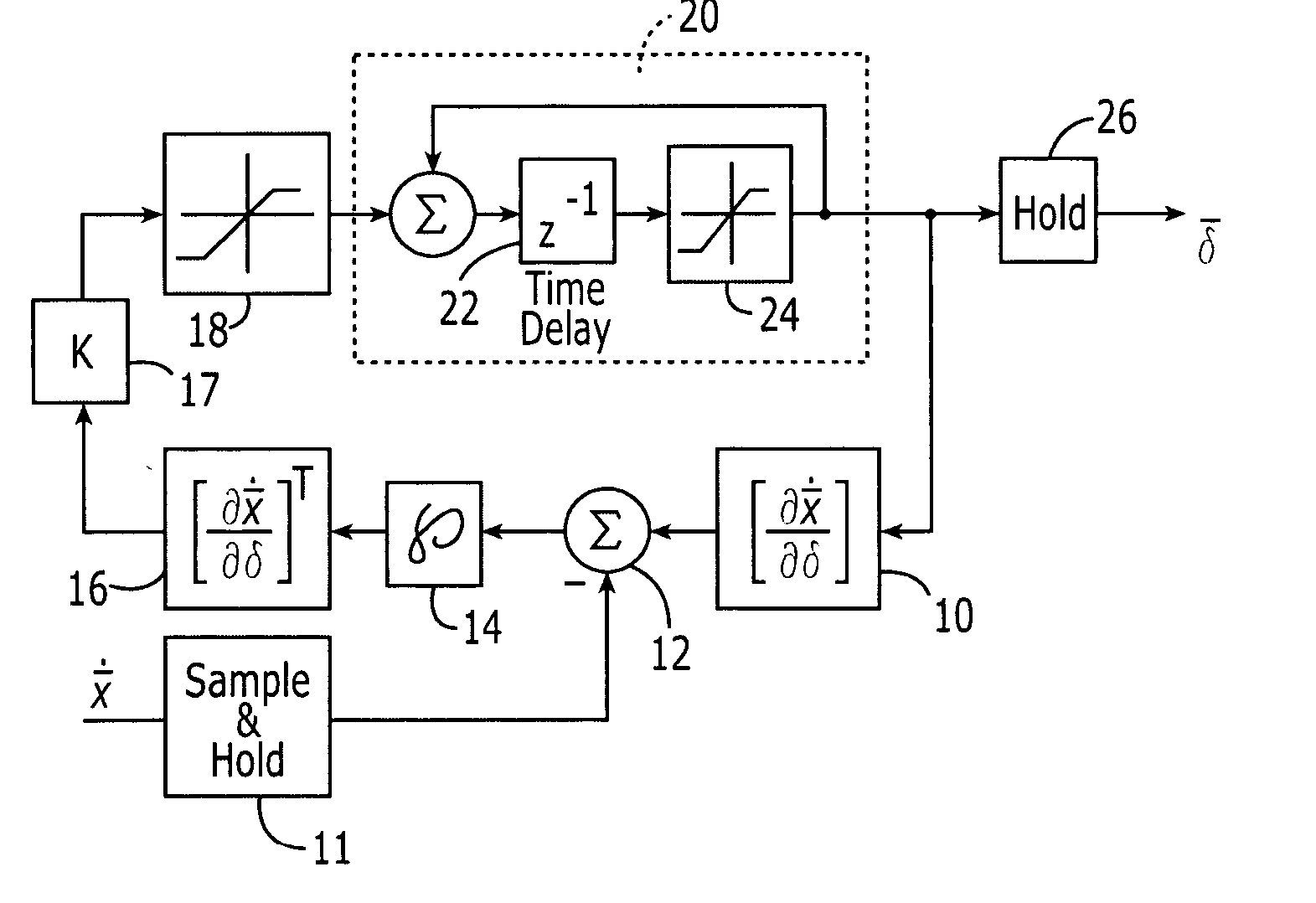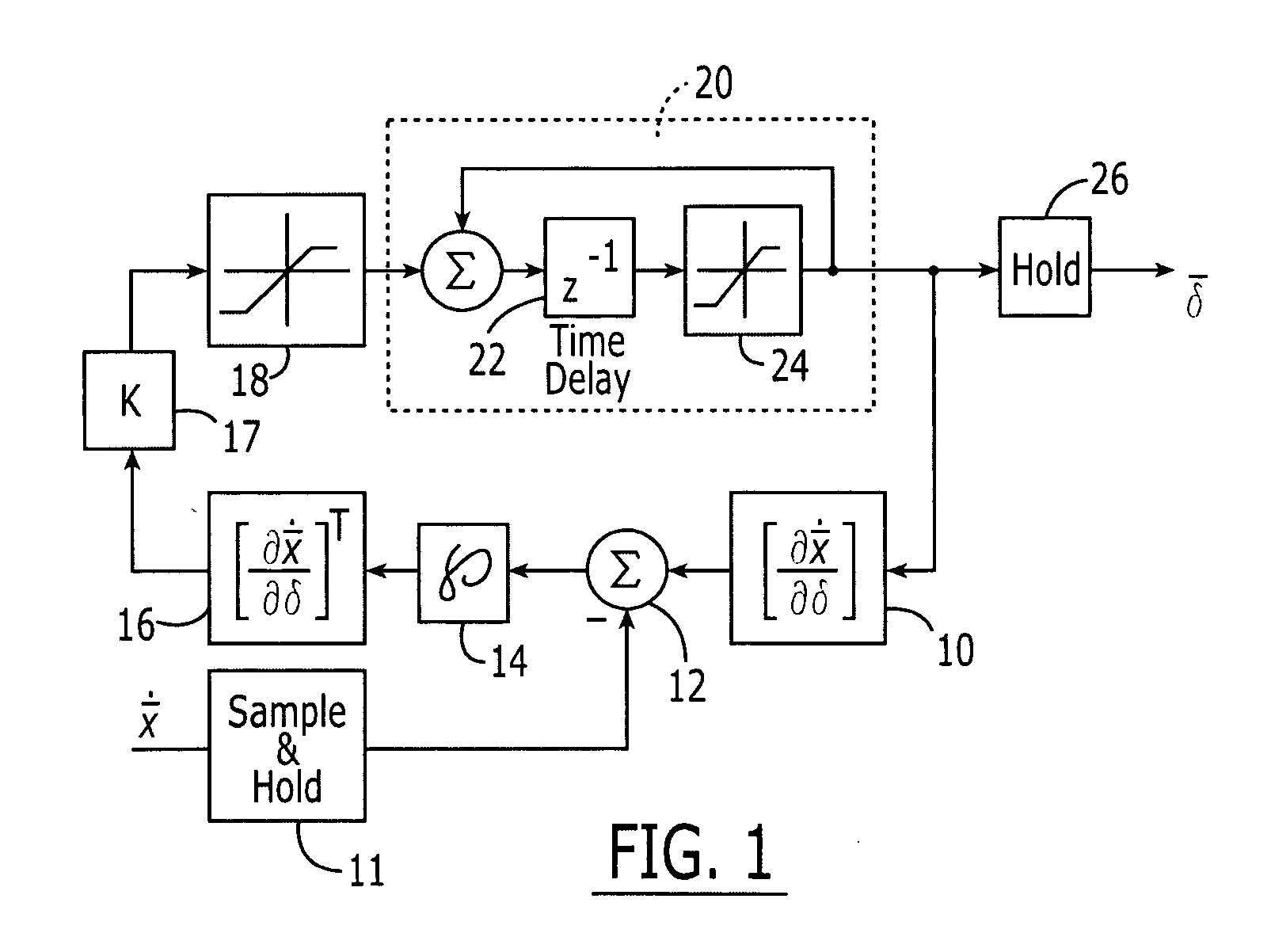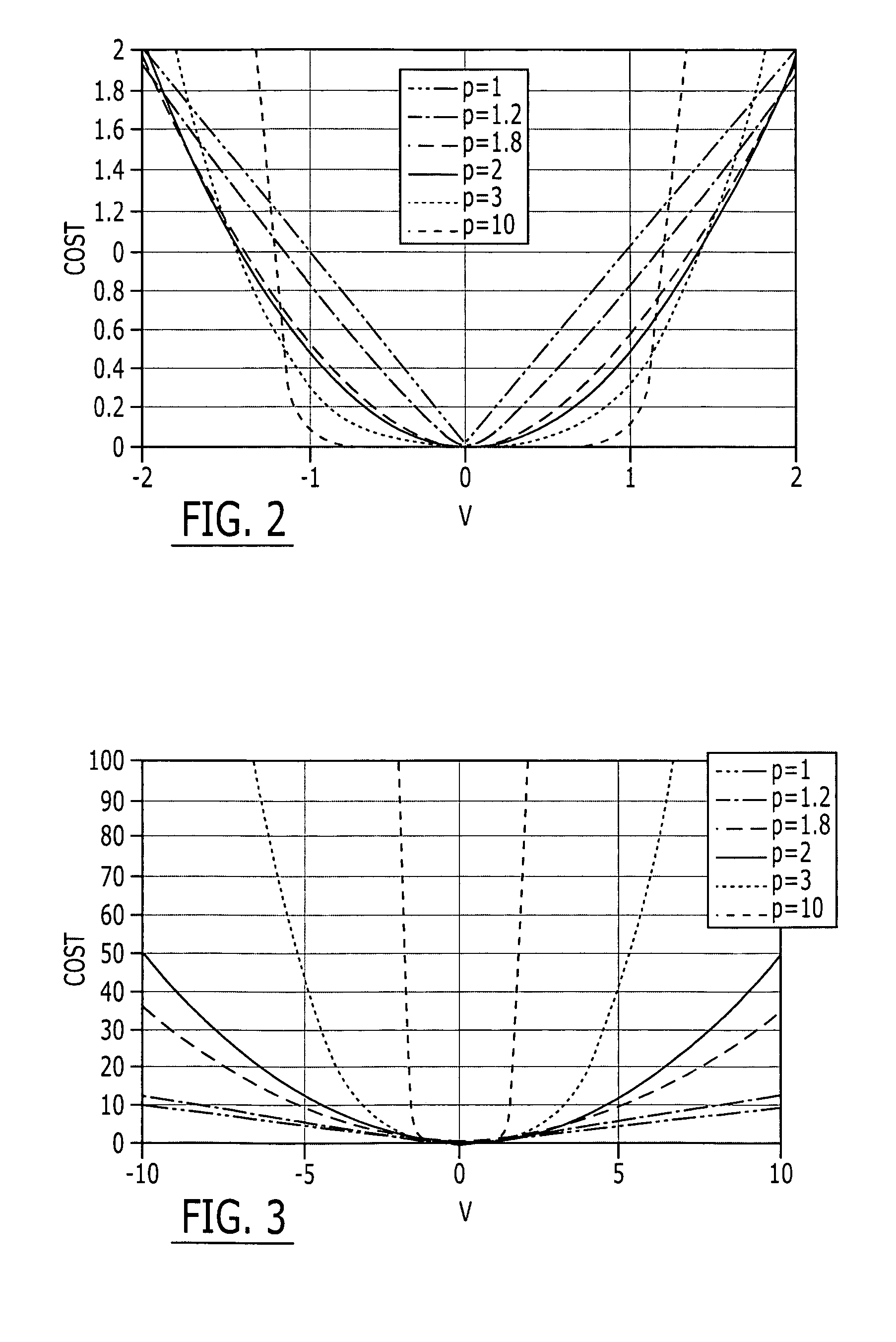Method and computer program product for controlling the control effectors of an aerodynamic vehicle
a technology of control effectors and aerodynamic vehicles, applied in adaptive control, process and machine control, instruments, etc., can solve the problems of difficult verification of the proper operation of the flight control reconfiguration system, high complexity of failure detection and flight control reconfiguration systems, and adversely affecting the ability of conventional control systems to maintain, etc., to achieve efficient implementation and efficient control of the control effectors
- Summary
- Abstract
- Description
- Claims
- Application Information
AI Technical Summary
Benefits of technology
Problems solved by technology
Method used
Image
Examples
Embodiment Construction
[0023] The present invention now will be described more fully hereinafter with reference to the accompanying drawings, in which preferred embodiments of the invention are shown. This invention may, however, be embodied in many different forms and should not be construed as limited to the embodiments set forth herein; rather, these embodiments are provided so that this disclosure will be thorough and complete, and will fully convey the scope of the invention to those skilled in the art. Like numbers refer to like elements throughout.
[0024] A method and a corresponding computer program product are provided for controlling the plurality of control effectors of an aerodynamic vehicle, such as an aircraft, including, for example, a direct lift aircraft capable of vertical takeoff and landing. As known to those skilled in the art, aerodynamic vehicles have a wide variety of control effectors with the type and number of control effectors depending upon the type and model of the aerodynami...
PUM
 Login to View More
Login to View More Abstract
Description
Claims
Application Information
 Login to View More
Login to View More - R&D
- Intellectual Property
- Life Sciences
- Materials
- Tech Scout
- Unparalleled Data Quality
- Higher Quality Content
- 60% Fewer Hallucinations
Browse by: Latest US Patents, China's latest patents, Technical Efficacy Thesaurus, Application Domain, Technology Topic, Popular Technical Reports.
© 2025 PatSnap. All rights reserved.Legal|Privacy policy|Modern Slavery Act Transparency Statement|Sitemap|About US| Contact US: help@patsnap.com



